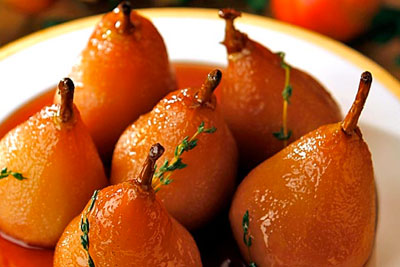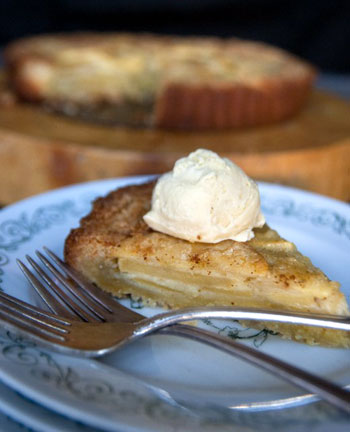 We make a lot of fuss over heirloom peach varieties that date back to the 1960s and tomatoes that go back as far as the 1930s. But did you know that the Bartlett pear, that standard grocery store fruit, actually dates back to the 1770s? The Bartlett, called the Williams pear in England where it was first found, gets its name from Enoch Bartlett, who was the first person to sell the trees in the U.S. in the early 1800s.
We make a lot of fuss over heirloom peach varieties that date back to the 1960s and tomatoes that go back as far as the 1930s. But did you know that the Bartlett pear, that standard grocery store fruit, actually dates back to the 1770s? The Bartlett, called the Williams pear in England where it was first found, gets its name from Enoch Bartlett, who was the first person to sell the trees in the U.S. in the early 1800s.
"Barts" are the predominate pear grown in California, and there are two growing sites with very different fruit. The earliest pears were harvested in August around the Sacramento delta area. They are fine, but the ones being picked about now from the hilly orchards of Lake and Mendocino counties are much better.
How to choose: The best perfectly ripened Bartlett pears will be golden and fragrant and will have a slight softness at the neck. Don't worry if the fruit shows some russeting -- that's only skin-deep and doesn't affect the flavor.

 This past weekend, it was a bit cold. After Levi’s flag football game, I came home, grabbed 4 cooking magazines and got under the covers. I earmarked half of each issue and not only did I read each and every one of them but I spent almost the entire next day in the kitchen.
This past weekend, it was a bit cold. After Levi’s flag football game, I came home, grabbed 4 cooking magazines and got under the covers. I earmarked half of each issue and not only did I read each and every one of them but I spent almost the entire next day in the kitchen. I like foods that add a touch of luxury, where a little goes a long way. I'm thinking of things like caviar, smoked fish, truffles, whipped cream, chocolate. Nuts fall into that category for me too, maybe it's their association with the holidays or with desserts like cakes and cookies. Or maybe it's because they are so rich.
I like foods that add a touch of luxury, where a little goes a long way. I'm thinking of things like caviar, smoked fish, truffles, whipped cream, chocolate. Nuts fall into that category for me too, maybe it's their association with the holidays or with desserts like cakes and cookies. Or maybe it's because they are so rich.  There's nothing more spectacular than the brilliant colors of Autumn in the South, especially the trees that turn deep shades of amber and ruby red. It's my favorite time of year to visit the farm in middle Georgia, where I grew up and all of my family still resides. The 2 hour drive from my home in Atlanta takes me to a place that is truly another world. A phone call from my niece, Caroline, asking me to take her and her best friend to the Georgia National Fair, in nearby Perry was a good enough reason to go home for a long weekend.
There's nothing more spectacular than the brilliant colors of Autumn in the South, especially the trees that turn deep shades of amber and ruby red. It's my favorite time of year to visit the farm in middle Georgia, where I grew up and all of my family still resides. The 2 hour drive from my home in Atlanta takes me to a place that is truly another world. A phone call from my niece, Caroline, asking me to take her and her best friend to the Georgia National Fair, in nearby Perry was a good enough reason to go home for a long weekend.  I love making big batches of soup on the weekend. I store some of it in the refrigerator, and the rest I freeze in quart containers for when I need a quick lunch or dinner. I also prefer using homemade chicken stock, which I also keep in the freezer.
I love making big batches of soup on the weekend. I store some of it in the refrigerator, and the rest I freeze in quart containers for when I need a quick lunch or dinner. I also prefer using homemade chicken stock, which I also keep in the freezer.
